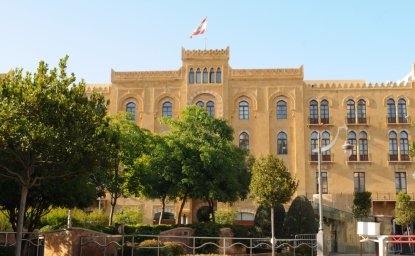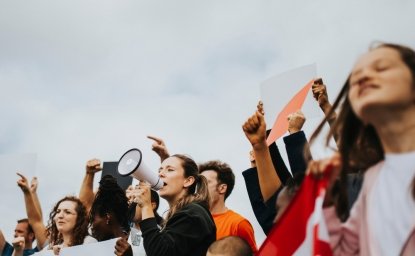
A blog of the Middle East Women's Initiative
Lebanon has lost yet another brilliant mind.
“I am leaving”, my thirty-year-old friend declares during a classic 6:00 PM electricity black out in Beirut. “Don’t ask me where I’ll go… anywhere but here. It’s over. I’m breaking up with this country.” Unsurprised, I reply, “but we are the only hope left, you cannot leave!” With a cheeky smile and a shake of his head, I knew that my friend had made up his mind. Lebanon has lost yet another brilliant mind.
But could I blame him? What could I possibly offer him that could make him change his mind? In a 2019 statement, the previous Minister of Labor, Mohammad Kabbara, stated that the overall unemployment rate in Lebanon stood at 25 percent, with unemployment among those under the age of 25 at 37 percent. The exact truth behind those numbers remains questionable. So why then should my friend stay? His $700 salary was not enough for his double undergraduate degrees. $700 could not sustain one individual in Lebanon, yet alone an entire family.
In a country fragmented by war, Lebanon is no stranger to corruption. Since the end of the civil war in 1990, the country has been unable to supply 24-hour electricity to its households. The same faces have occupied government for more than thirty years. The country has been drowning in its own garbage waste for five years, its economy hobbles into a financial crisis, all while providing poor shelter to 2 million Syrian refugees, and leaving many, including its youth utterly paralyzed.
The youth are the last remaining hope for Lebanon. Or at least that is what we are constantly told. We are the agents of change. We are so powerful that we have congregated at the forefront of every battle Lebanon has ever fought, most famously the 2019 Revolution. The revolution which began on October 17th was a runway for the Lebanese youth to strut confidently through the streets and tune their hearts to the melody of Hasta Siempre, Comandante. For months the youth, who are unable to vote until the age of 21, actively took to the streets and social media, protesting and raising awareness of the soot and filth that was drowning them. The revolution was a fertile opportunity for young voices to be heard.
For the first time in history, Lebanese citizens from every religious sect across the country joined the same struggle. Despite the absence of a national student union, student movements had been revived across Lebanon in Beirut, Tripoli, Aley, Nabatieh, and Tyre. Students clubs from the American University of Beirut, Notre- Dame University, and Université Saint-Joseph protested on and off campus. Lebanon’s national university, the Lebanese University, played a major role in the protests by setting up tents in the infamous Riad Al-Solh square in downtown Beirut. On “Student’s Day”, the 21st of November, banners were raised declaring “On this day, I won’t be learning history, I will be writing it.”
Then came COVID-19, and the revolution, like everything else, was suffocated. Life was paralyzed and the revolution inevitably went dormant. This time however, it was due to the unpredictable intervention of a global pandemic, rather than any governmental effort.
However, many saw the October 2019 revolution as our last chance. But when the pandemic subsides, can the youth once again breathe life into this movement? Can we band together to resuscitate Lebanon? Is it too late?
Author


Middle East Program
The Wilson Center’s Middle East Program serves as a crucial resource for the policymaking community and beyond, providing analyses and research that helps inform US foreign policymaking, stimulates public debate, and expands knowledge about issues in the wider Middle East and North Africa (MENA) region. Read more


Middle East Women's Initiative
The Middle East Women's Initiative (MEWI) promotes the empowerment of women in the region through an open and inclusive dialogue with women leaders from the Middle East and continuous research. Read more

Explore More in Enheduanna
Browse Enheduanna
Women are the Catalysts for Change in Lebanon

How Education Can Empower Young Women in MENA


